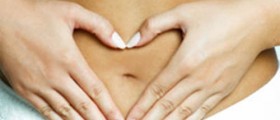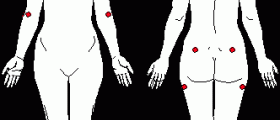
Premenstrual syndrome, also known as PMS, is a series of symptoms experienced by ¾ of all menstruating women. The symptoms usually involve different emotional changes and physical annoyances. PMS is usually strongest at the late 20’s or early 30’s. For many women, this is the most unpleasant and monthly recurring problem. However, changes to the diet and the lifestyle may do the wonders and greatly reduce the severity of the symptoms.
Causes of premenstrual syndrome
The definitive cause of PMS is not yet known. However, the most probable cause of PMS symptoms are the hormonal changes in women’s body. Normally fluctuating progesterone and estrogen levels are causing severe changes in the brain chemicals. For example, women with PMS have noticeable fluctuations in serotonin levels and these may influence the emotional changes as well as the food cravings. The level of endorphins is also changed in women with PMS. Endorphins are, actually, responsible for the experience of pain and pleasure.
Certain lifestyle factors are also significant in determining the cause and intensity of premenstrual syndrome. Unmanaged stress, poor eating habits, drinking alcohol or caffeinated drinks, and use of tobacco, may also contribute to the physical changes and worsening of the symptoms.
Signs and symptoms of PMS
Symptoms of PMS vary from one woman to another. For some of them, symptoms of physical pain and emotional discomfort are so severe that they change the daily routine and social relationships. For some of the women, symptoms start to appear in the middle of the menstrual cycle, but they more usually occur just a couple of days before the menstrual bleeding starts. There are almost 200 different symptoms associated with PMS, but most of the women experience just a couple of them and in a predictable pattern.
Severe PMS symptoms include: breast tenderness and swelling, abdominal inflation, extreme irritability and mood-swings, depression, sorrow, headache, weakness, problems with sleeping and lack of concentration.
Lifestyle adjustments and methods of self-help
To manage and reduce the symptoms of premenstrual syndrome, it is important to make slight changes to the daily routine. First, it is important to make some modifications to the daily diet. Portions should be smaller but, more frequent, high in complex carbohydrates and calcium but low on sodium. Caffeine and alcohol should be avoided and it is advisable to use a multivitamin supplement.
At least half an hour of easy physical activity, daily, may also help to improve overall health and lessen the symptoms of the syndrome. Enough sleep and different relaxation techniques will certainly help to maintain emotional stability during this period.

















Your thoughts on this
Loading...